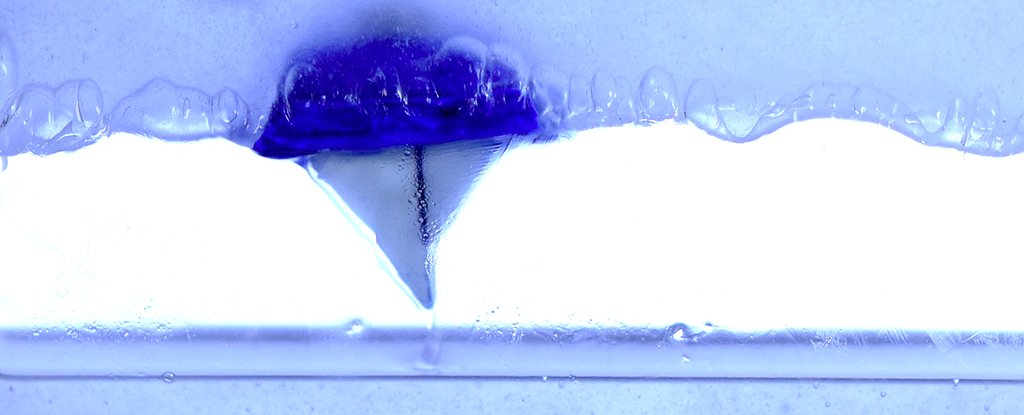Products You May Like
It’s like something out of Stranger Things, but with fewer Demogorgons and less of the sinister darkness: physicists have flipped reality on its head, creating their own ‘upside down’ by getting small boats to float underneath a levitating liquid.
Seeing it in action, you would think you were watching some kind of sci-fi movie effect, but it’s all to do with the forces of vertical vibration. It’s already been established that some carefully calibrated vertical shaking can keep liquid suspended inside a container, and here the team has taken advantage of the phenomenon.
In this new study, not only do they achieve the suspension, but demonstrate that it’s possible to create a similar balance of forces in the lower half of the chamber as in the upper half: when put on the upside down surface of a viscous liquid, a small model boat or ball will stay in place.
[embedded content]
“When placed over a less dense medium, a liquid layer will typically collapse downwards if it exceeds a certain size, as gravity acting on the lower liquid interface triggers a destabilising effect called a Rayleigh-Taylor instability,” the researchers write in their paper.
“Of the many methods that have been developed to prevent the liquid from falling, vertical shaking has proved to be efficient and has therefore been studied in detail.”
“We predict theoretically and show experimentally that vertical shaking also creates stable buoyancy positions on the lower interface of the liquid, which behave as though the gravitational force were inverted. Bodies can thus float upside down on the lower interface of levitating liquid layers.”
What actually happens here is that the boat (or any similar object, as long as it’s small enough) gets pushed into the liquid because of the high pressure of the air pocket underneath, pressure created by the weight of the liquid layer in the first place.
When the upward force of this pressure is balanced out by the downward force of gravity, the object floats on the upside down surface. Balancing that pressure is the tricky part, and that’s one of the main topics of this new study – the necessary forces were mathematically modelled before being tested in the lab.
The curious effect even stays stable if the boat gets pushed or pulled (in this case via magnets used through the glass of the container) – it will regain its equilibrium, just as if it was bobbing on a lake, right side up.
The strength and the frequency of the shaking are crucial for this trick to work. As the vibrations are decreased, the magic spell is broken, and both boat and suspended liquid layer drop down to the bottom of the chamber (watch the video above to see this in detail).
This isn’t just a clever party trick though: the findings could potentially have a whole variety of applications, such as transporting gas or other materials through fluids in industrial machinery, for example. For now, it’s fascinating to see just how much like magic physics can seem.
The research has been published in Nature.
